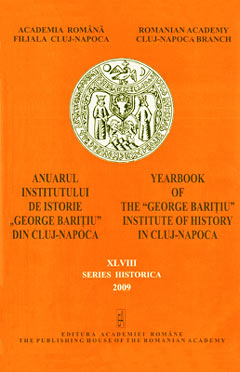Primele "fraternităţi" ale calfelor din Transilvania (1463-1484)
The First Journeymen "Fraternities" in Transylvania (1463-1484)
Author(s): Lidia GrossSubject(s): History
Published by: Editura Academiei Române
Keywords: journeymen; fraternities; medieval cities; Transylvania; religious life; charity; Confraternity; Brotherhood guild; Transylvania 15th Century
Summary/Abstract: This article analyzes the first fraternities (Bruderschaften) of the Transylvanian journeymen (calfe) formed during the second half of the fifteenth century. The aim of this research is to open up new perspectives of approach upon an under-researched historical phenomenon that for most of the time was treated superficially and biased. The first fraternities appeared in the cities of Brasov (Kronstadt) and Sibiu (Hermannstadt) where the level of urbanization was comparable to that of Western European cities. During the fifteenth century, the religious life's specificity and transformations in the human sensitivity, which were linked to the "rite of passing", favored the increase in the brotherhoods' number. Such structures were actively engaged in organizing solemn funerary ceremonies to assure the eternal redemption. Western historiography on this subject associates the journeymen's fraternities to professional organizations. Therefore, this article provides the reader with a succinct overview of this institution, which can be seen as an alternative to both guilds (economic based associations) and brotherhoods (religious and charitable organizations). The first documented fraternities were in Brasov: fraternity of shoemakers' journeymen (1463, the Saint Cross Altarpiece), the fraternity of furriers' journeymen (1468), fraternity of tailors' journeymen (1476, dedicated to Jesus Christ and Virgin Mary), fraternity of blacksmiths' journeymen (1478, the Saint Antony altarpiece), fraternity of the viewers' journeymen (1481). In Sibiu there were organized the fraternity of shoemakers' journeymen (1484, honoring Saint John). The aspects that characterize these fraternities converge to the conclusion that they were profoundly religious and educational associations, which were integrated into the confraternities' movement that animated the Transylvanian fifteenth century urban society.
Journal: Anuarul Institutului de Istorie »George Bariţiu« - Series HISTORICA
- Issue Year: XLVIII/2009
- Issue No: 48
- Page Range: 47-56
- Page Count: 10
- Language: Romanian

